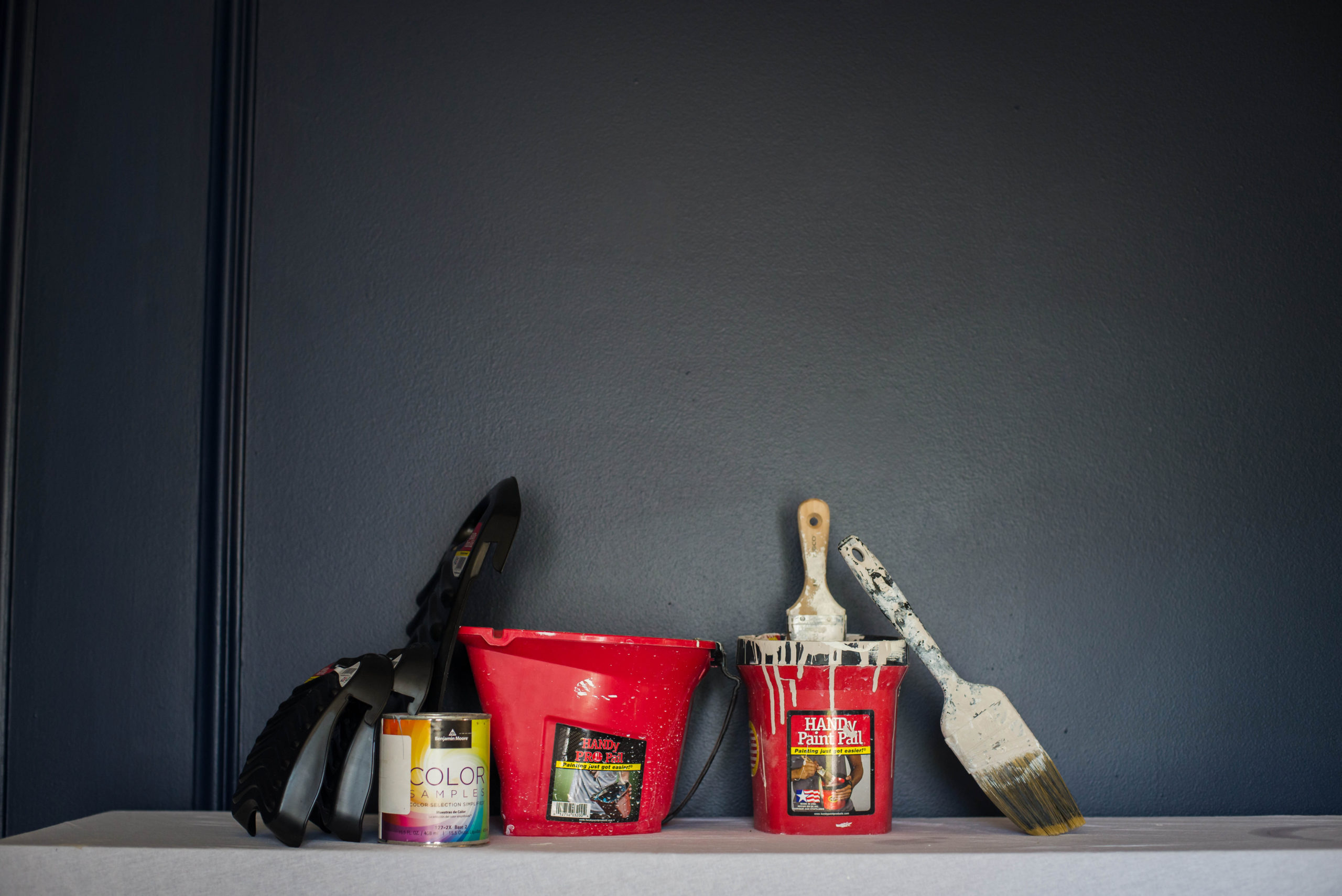
This post is sponsored by HANDy Paint Products.
Holy man. You never realize how slow you actually are at your own home renovations until you document them.
Here we thought our blog would keep us more accountable. LOL. We were thinking we were cruising right along with our basement renovation, but when I went searching for our last updated post – we scraped our basement ceilings January 26, 2016 – oops. And we thought we would be done by the spring…mwahahahahahaha. We’re so funny.
Popcorn! Know what popcorn ceilings are? Well, let me tell you. Popcorn ceilings were popular in the ’50s – ’80s, and now more and more homeowners are scraping them down and adding their own knockdown ceiling texture.
In all of our renovation homes, the first thing we do is remove the textured popcorn ceilings. And, actually, it’s the most fun.
Scraping popcorn off your ceiling is like that feeling you get when you are scraping wallpaper and you know when you get that big chunk to come off at one time? Well, that is what scraping popcorn texture off your ceiling is like the entire time.
I’m not kidding. I actually really enjoy it, but it is extremely messy! If you’re going to do it in a house you’re living in, it might not be as much fun.
How to Scrape Popcorn Ceilings
- Fill a spray bottle with water.
- Spray the water onto the ceiling and let soak for a few minutes.
- Scrape off the popcorn texture using sheetrock mudding knives.
- Once the ceilings are scraped, sand the entire ceiling to get off the rough edges.
There are also many recipes out there for mixtures that help the popcorn texture come off faster, but water worked just fine for our ceiling. For some tips on how to remove popcorn ceilings faster and easier, head HERE.
If you are looking for a full tutorial on how to remove popcorn ceilings, complete with all the materials and tools, we have a tutorial on How to Scrape Popcorn Ceilings.
Then it’s time for the knockdown ceiling texture mud to get mixed. There are a ton of different mixes out there to use, but we used ProForm Lite Blue. The key is to just make sure the mixture is pancake batter thick and will work in the sprayer.
Jamie applied the texture to the ceiling by spraying it with a drywall hopper gun (this will work with most hopper/sprayer guns). He then scraped over the mud with a drywall knife to knock it down.
Now that the living room ceiling is done next up is to tackle the entry way ceiling and the stairwell. Just for hiring out scraping popcorn ceilings alone runs along $1-2 per square foot, which is just the scraping.
That doesn’t include spraying the knockdown texture and painting.
To help save you a ton of money, today we’re going to show you how to apply knockdown ceiling texture. I’ll admit, in the first investment home, we had we hired it out because we were a little bit nervous about what damage we’d do.
In our 2nd renovation home, we decided to take on the challenge ourselves and sprayed the entire house and we loved it 100 times more.
How to Apply Knockdown Ceilings
Today we want to share with you how we applied knockdown ceiling texture throughout our entire home and how you can do it too in just six simple steps.
1. Gather the materials
- Plastic Sheeting (to cover walls and flooring)
- Masking Tape
- Paddle Mixer
- Drill
- Pre-Mixed Joint Compound OR 5-gallon bucket & All-Purpose Drywall compound
- Hopper Gun – (ceiling sprayer)
- Air Compressor
- Knock-Down Knife
2. Prep your space
Prepping is such an important step in any DIY project. You’ll want to move or cover all the furniture in the rooms you are going to apply the knockdown ceiling texture to. Use a large piece of plastic to cover the entire floor, taping the sides to the walls or trim.
Be sure that all surfaces are clean and covered before you start any work. Once the floor is covered and taped, apply the sheeting to all the walls overlapping the sheet from the floor to ensure full coverage.
Make sure to cover any light fixtures or other permanent fixtures to protect them from paint (masking tape works great for sealing edges).
3. Mix Your Product
Fill your 5-gallon bucket half full with the all-purpose drywall compound. Attach your paddle mixer to your power drill and add two cups of water to the compound. Place the paddle mixer into the mixture and slowly begin mixing your drywall.
Stir continuously until the mixture is thoroughly blended, adding more water as you go until the consistency resembles that of thin pancake batter.
If you want to simplify your project, and are concerned about getting the right consistency, you can purchase a premixed all-purpose joint compound. You can find a premixed bucket of about 60lbs of “mud” at most home improvements stores or hardware stores for about $10.
We recommend buying two buckets to start to make sure you don’t run out halfway through your project.
4. Let It Fly
Once your drywall product reaches your desired consistency, fill your spray gun with the texture mixture and set the spray nozzle to the orange-peel or fine particle texture. Unless you do a lot of painting, you most likely do not own a spray gun, but you can easily rent one from a paint store or rental company for about $25-$30 a day.
Before you begin spraying your ceiling directly, be sure to test the spray on a scrap piece of wood or plank. To determine how much pressure, start with your gun set to the highest amount of air pressure and if the mix comes out too thin when you test it, decrease the setting and test it again until your spray resembles the texture of an orange peel.
Quick tip, it might be a good idea to cover the air compressor with a sheet or some sort to keep the spraying texture from getting on it.
When you have finished testing your consistency and are ready to start spraying your ceiling, hold the gun about three feet from the ceiling and begin spraying side-to-side with long even strokes one layer at a time covering the whole ceiling. Allow first coat to dry for at least eight hours before you apply your second coat.
Once your first coat is completely dry, you want to add larger chunks of the mixture to enhance the texture.
Repeat the same process as the first coat, this time with the sprayer set to a higher setting creating those larger pieces and holding the gun about a foot further away from the ceiling. Again, cover the entire space with long, even strokes across. Scan over the areas and apply more mixture where you need to fill in the gaps or uneven spaces and let sit for 15 minutes.
5. Scrape
The final step to completing your DIY knockdown ceiling project is to the scrape across the textured compound with a knockdown knife. You want to be sure that you are just flattening the wall texture and not completely removing it. This is controlled by the amount of pressure you place on the knife as you pull over the ceiling.
The knife smooths out the textured peaks, creating a random maze design / knockdown texture. If you are worried about making unsightly lines, practice on that test board before moving on to the ceiling. Once all of the peaks and large mounds are smooth and flattened across the entire ceiling, allow the space to dry for at least 48 hours before you begin painting.
6. Paint
Spray versus rolling is always the big question. Either way, make sure you’re wearing old clothes and your floors are covered because it’s going to get even messier.
Painting overhead leaves you covered from head to toe. If your home isn’t in full-on construction mode, I would suggest rolling. We are fans of rolling because the more we spray, the more we end up having to go back to fix and repaint.
When you’re rolling you’re literally up there looking at all the details, so we’ve quickly realized this is just the better option for us.
Using a paint sprayer covers the ceiling surface quicker, which also makes you go through more paint. If you don’t own a paint gun, you can always rent one from your local home improvement or hardware store.
Using a sprayer, multiple light coats are better than one heavy spray.If you’re going the rolling route, I would strongly suggest getting an extension pole for your paint roller.
One of us usually cuts in along the edges while the other comes behind and rolls. We also always buy the paint that has the primer in it. Trust us, when you’re done with your first coat, your neck is going to hate you if you have to do it all over again. Haha!
And regardless, make sure you are wearing a mask! Those paint fumes can be dangerous.
Jamie has been known to throw up in the past. haha- yikes!
Can’t wait to see your finished projects. Make sure to tag us @construction2style and @handypaintpail so we can give you some love.
Disclosure: construction2style has used affiliate links throughout this post. Although we are compensated for these links when purchases are made, we stand behind and use all brands and products we endorse on our site.
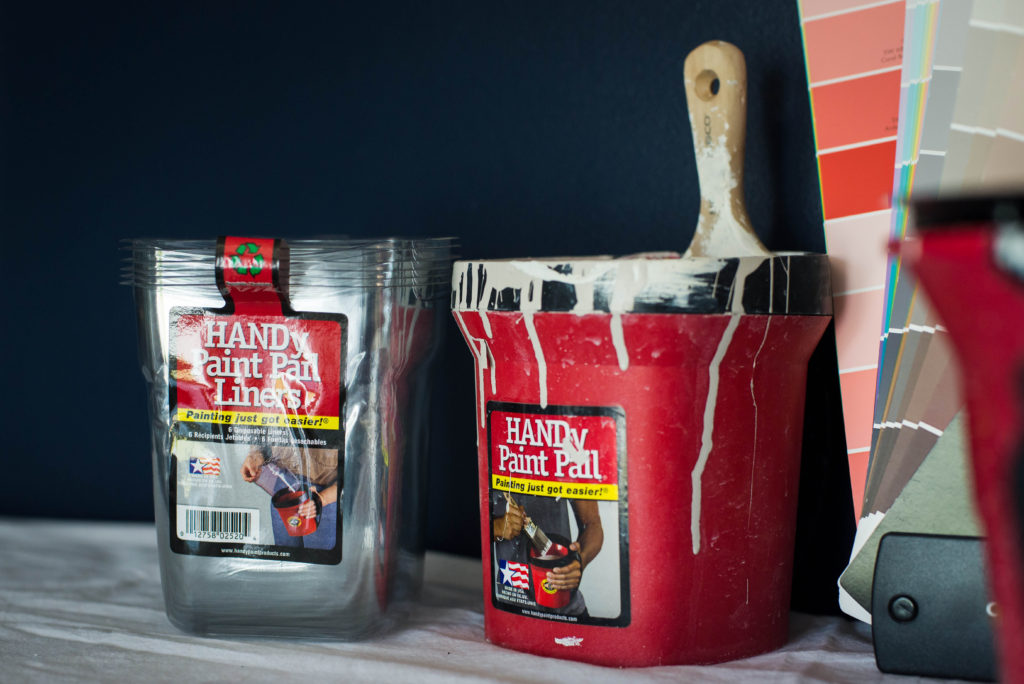
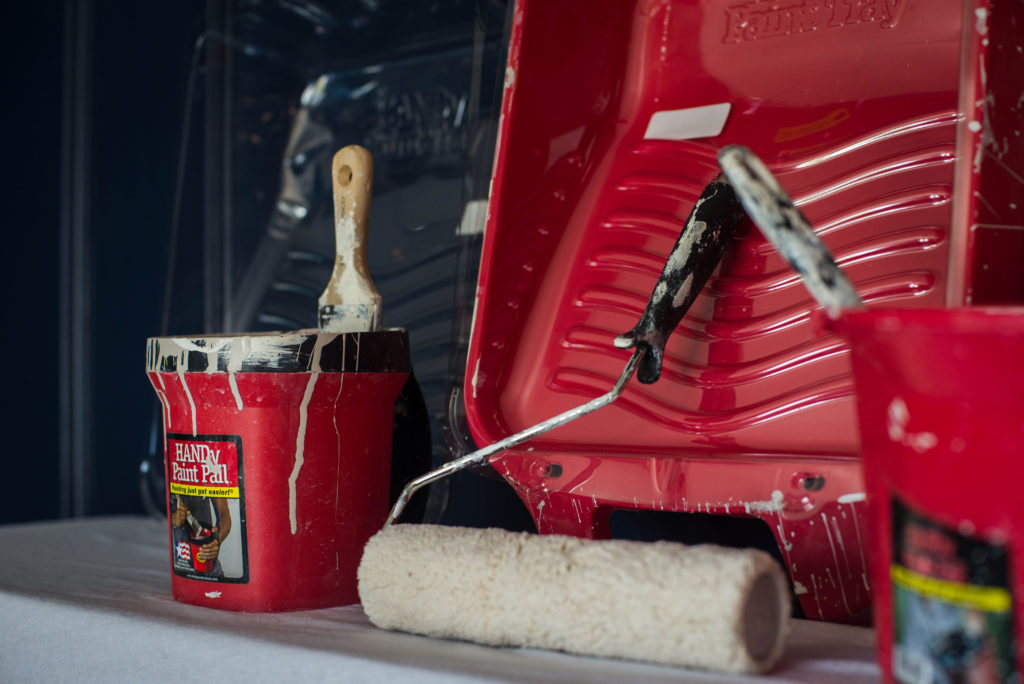
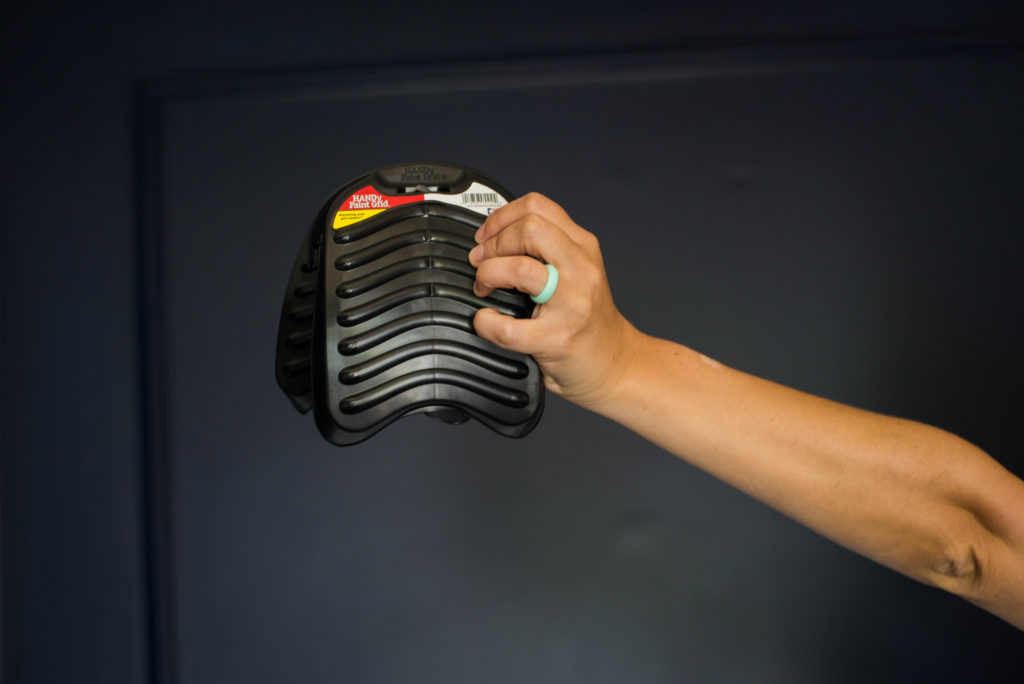
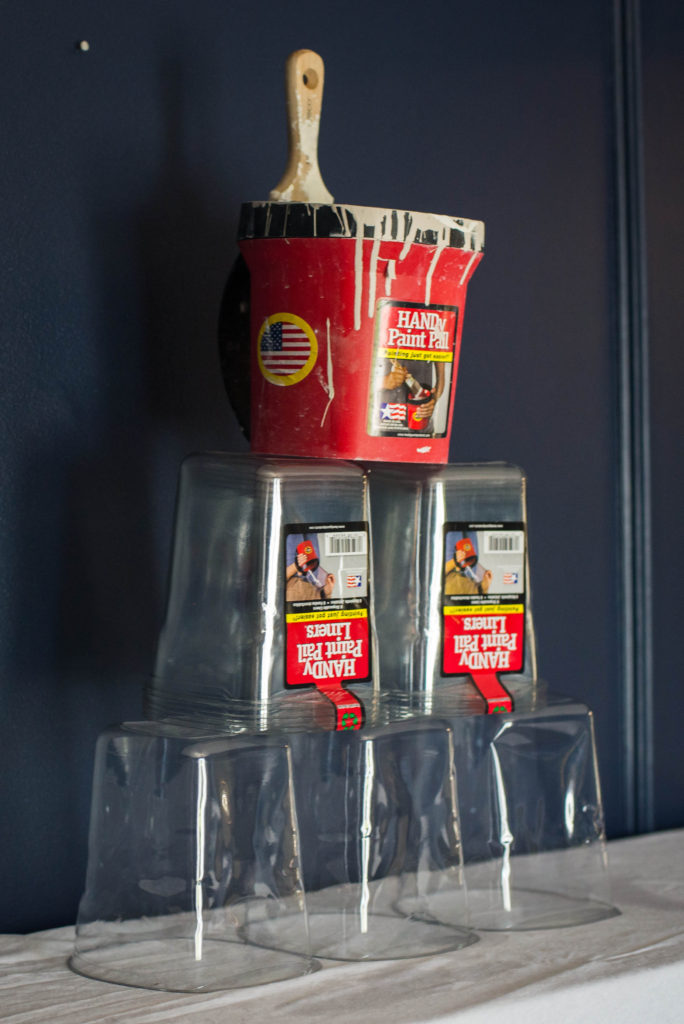
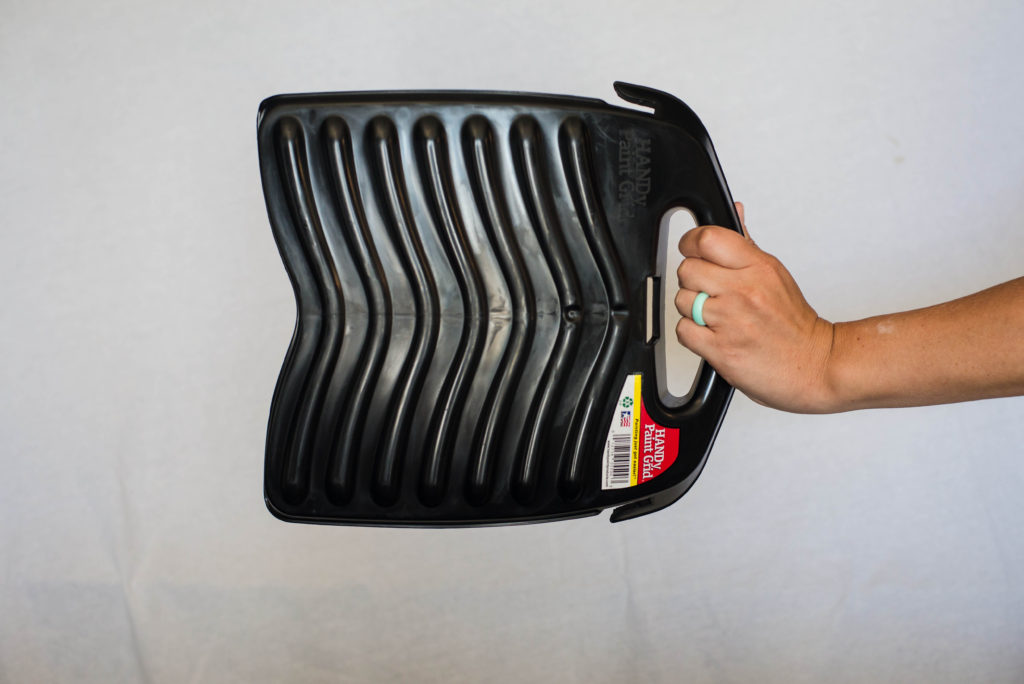
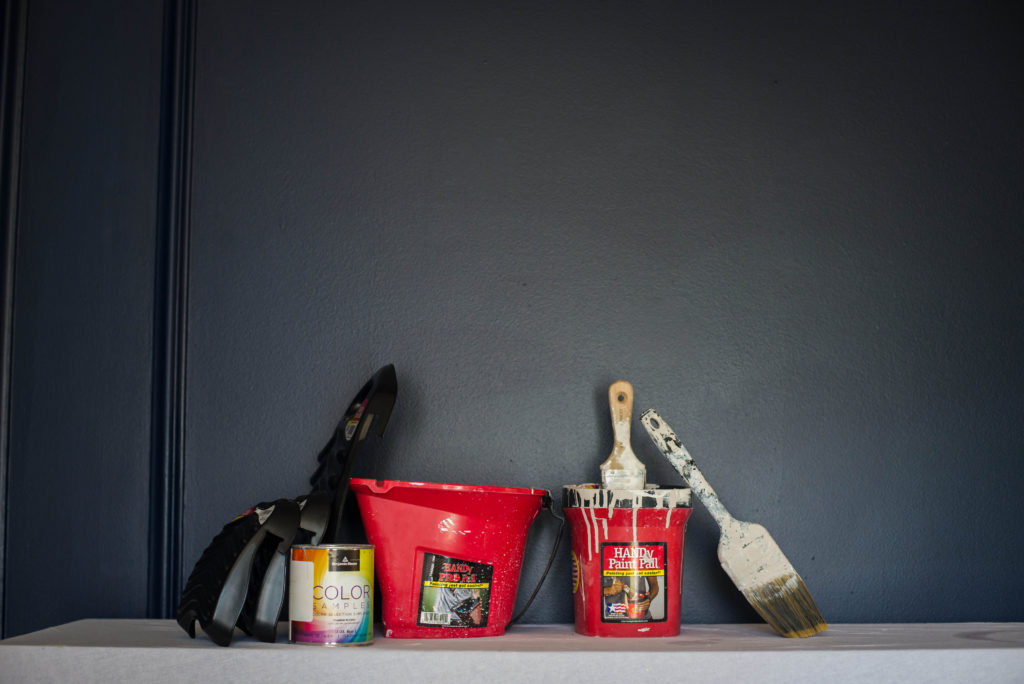
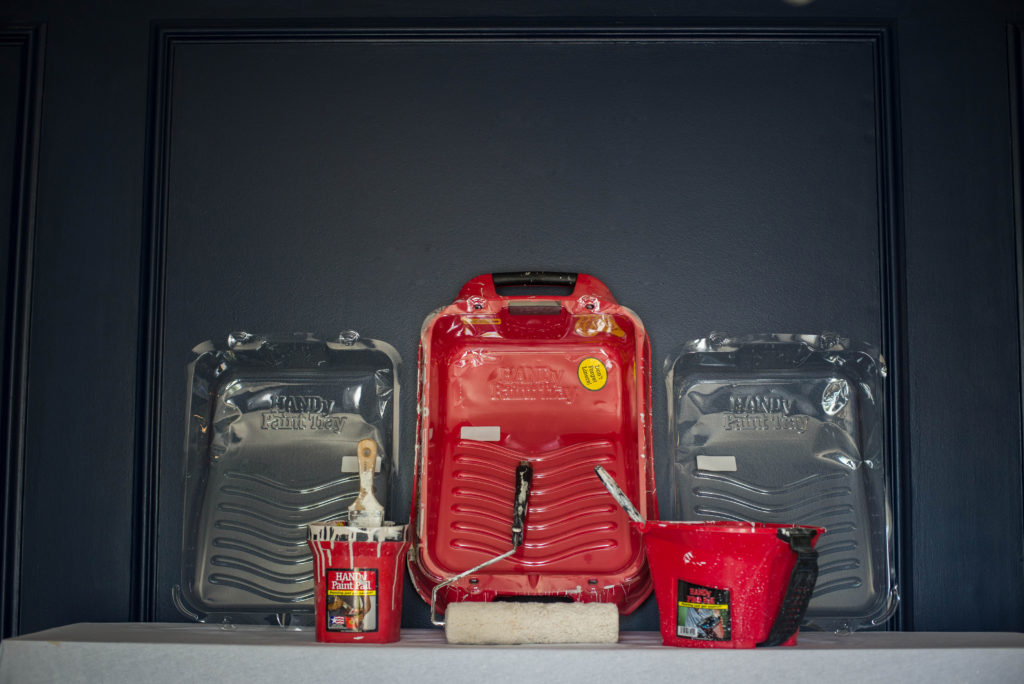
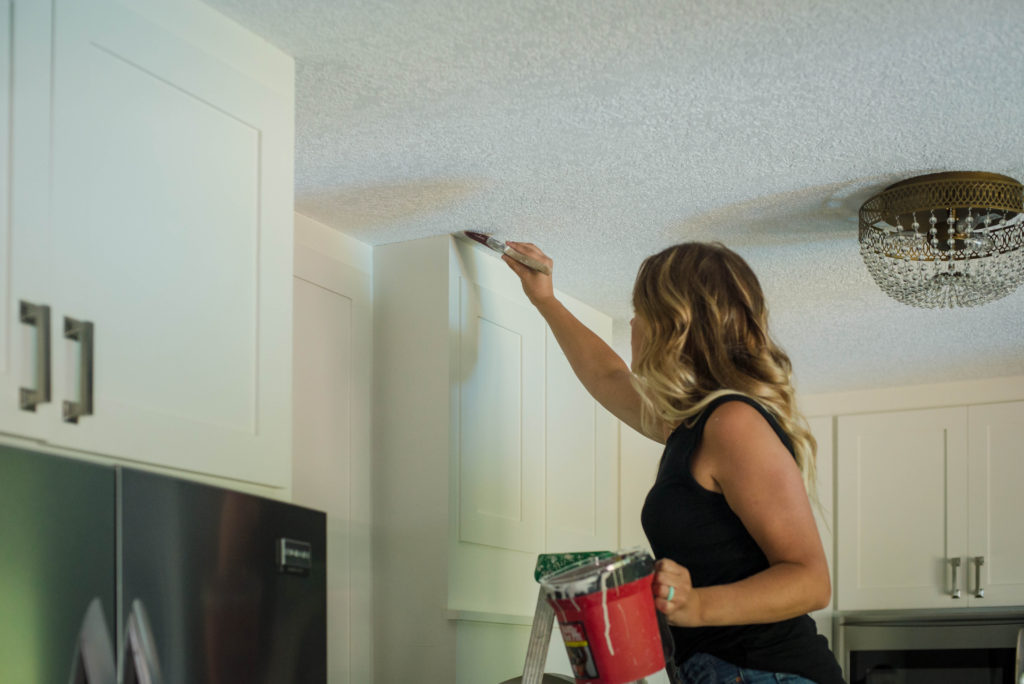
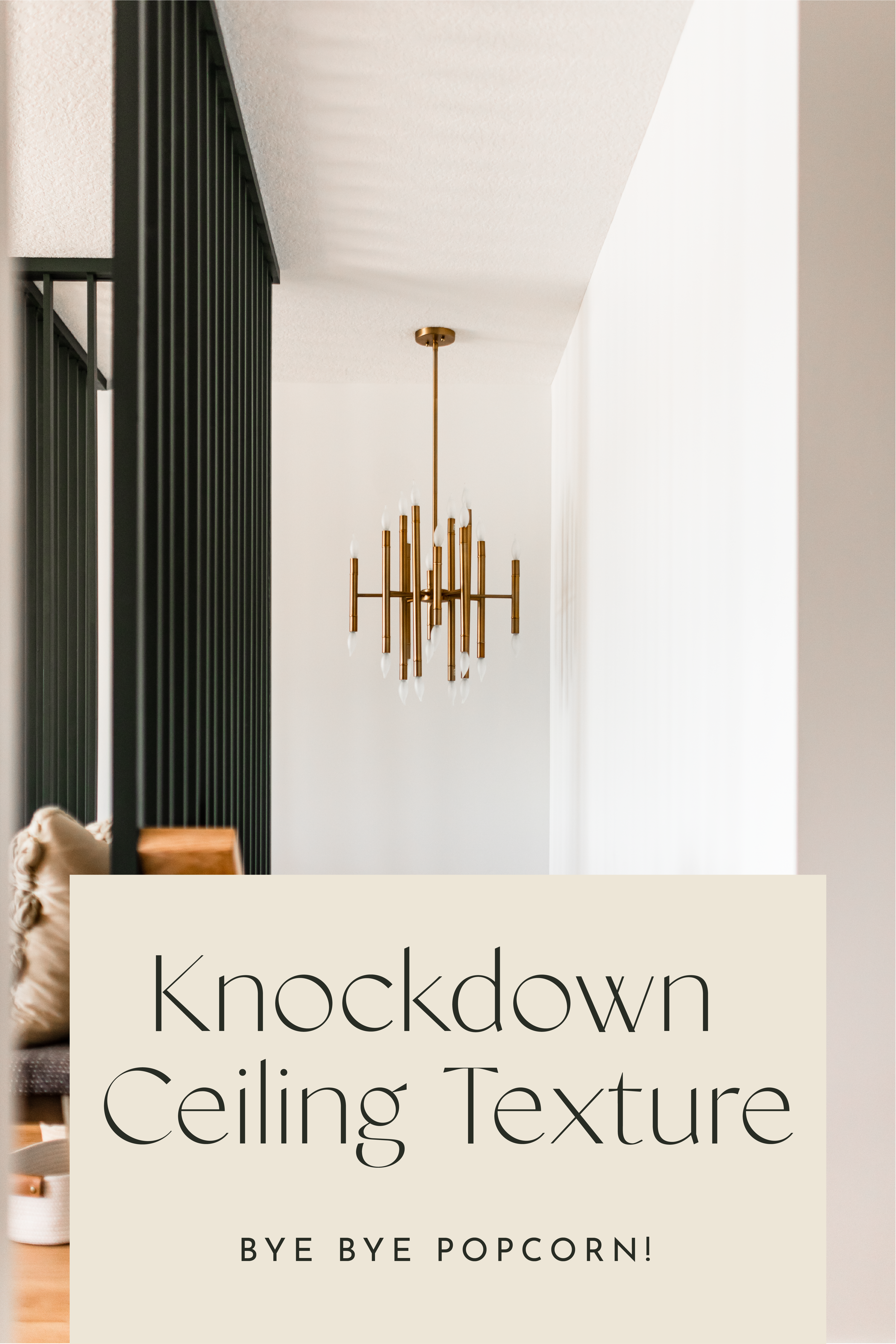
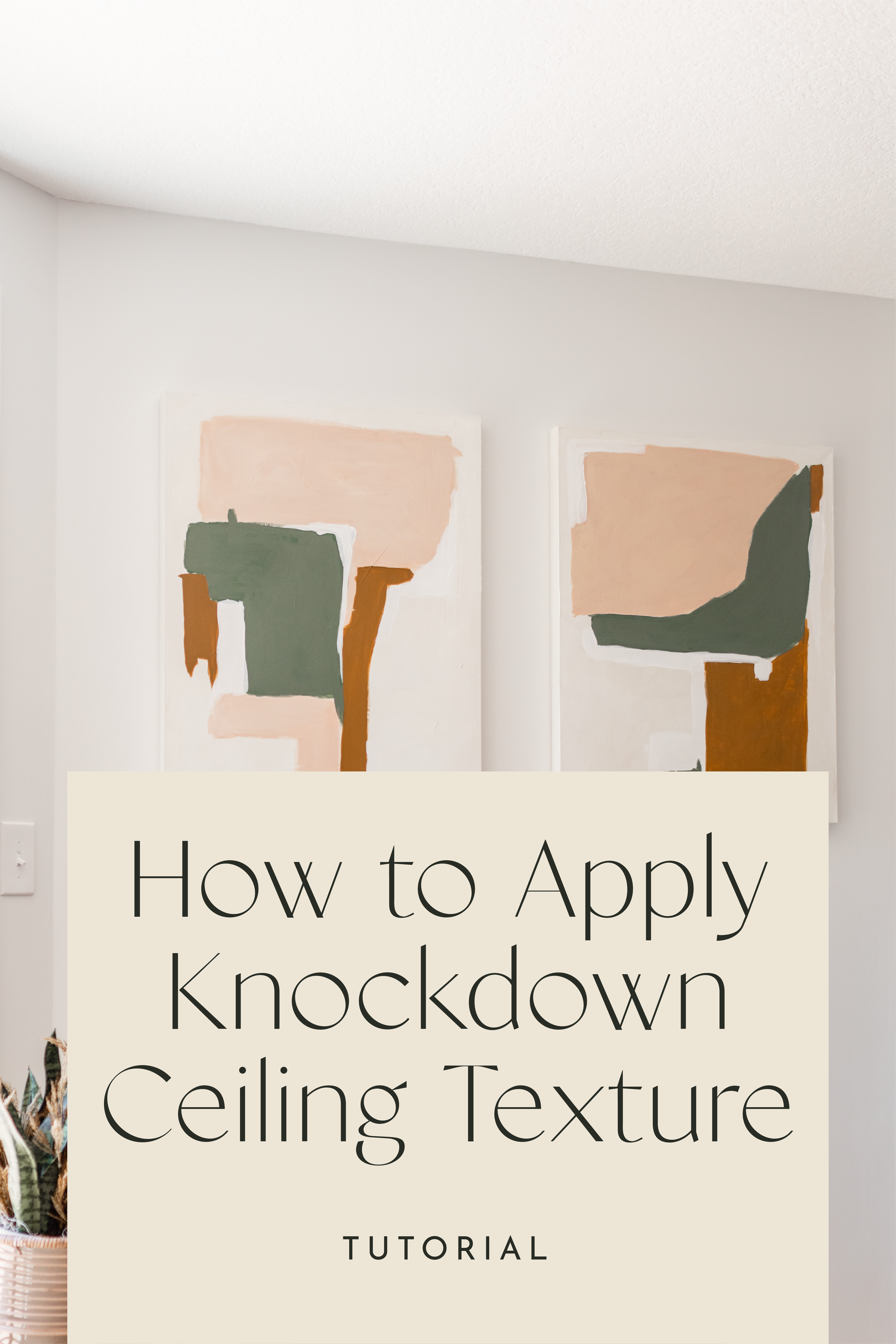
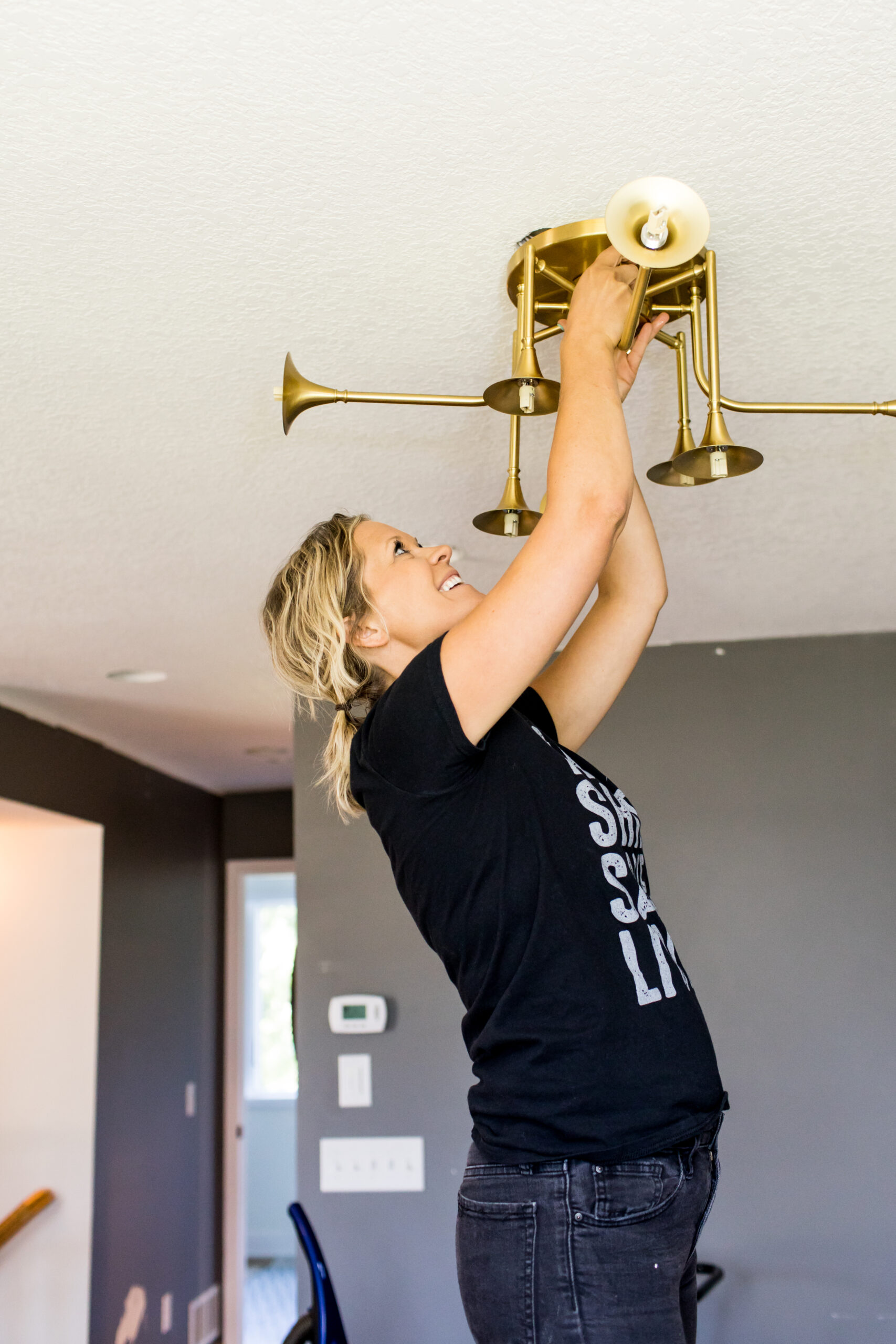
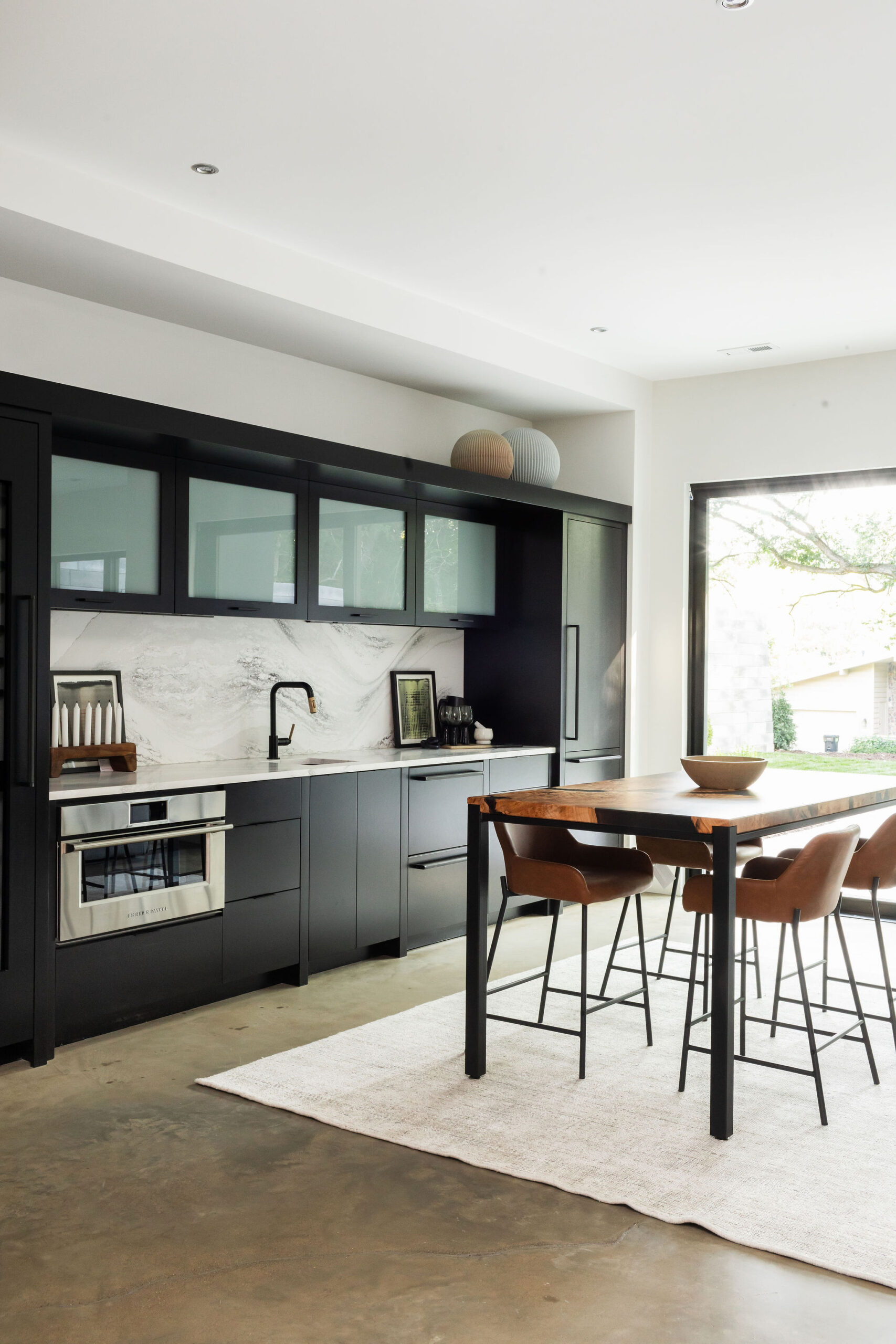
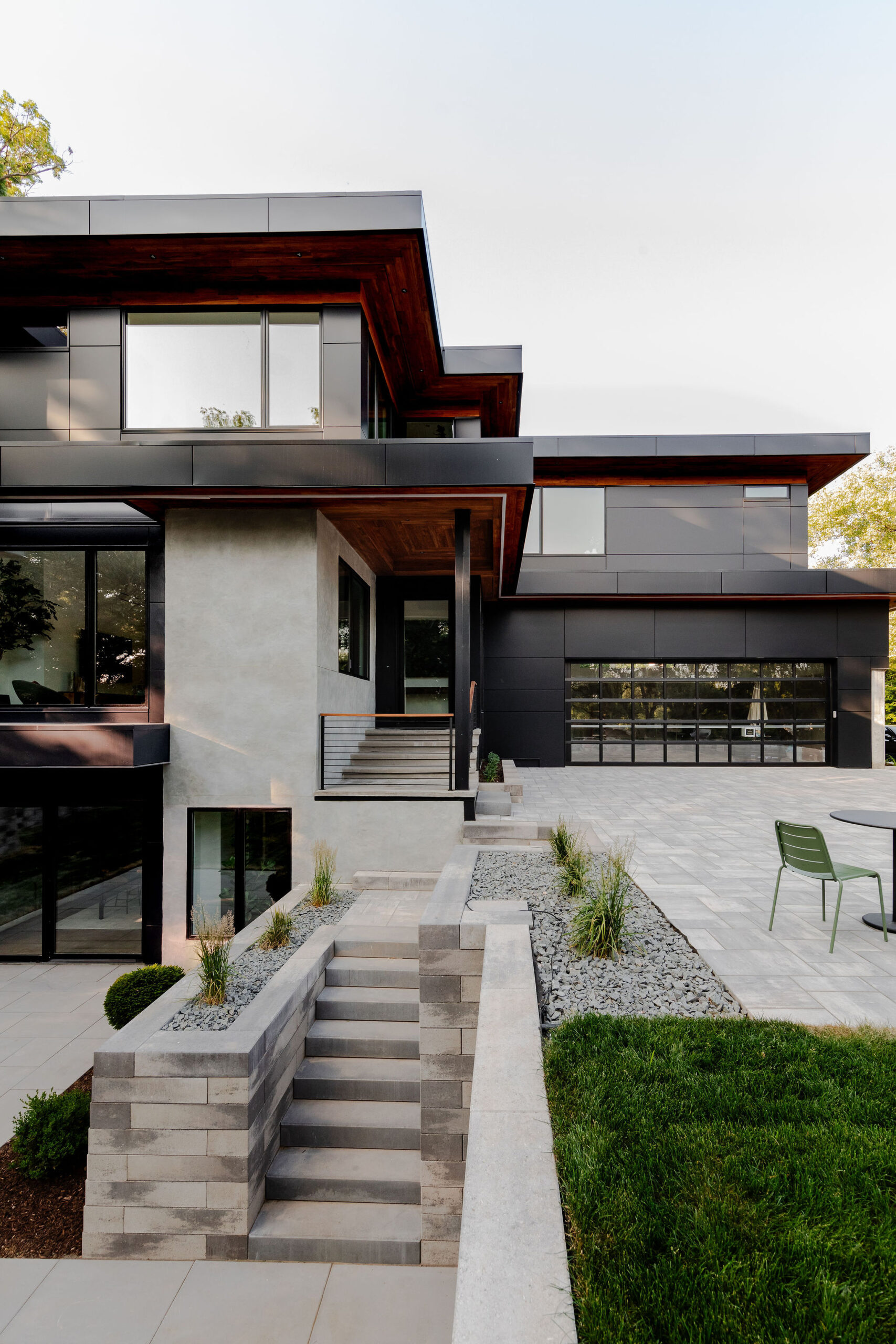

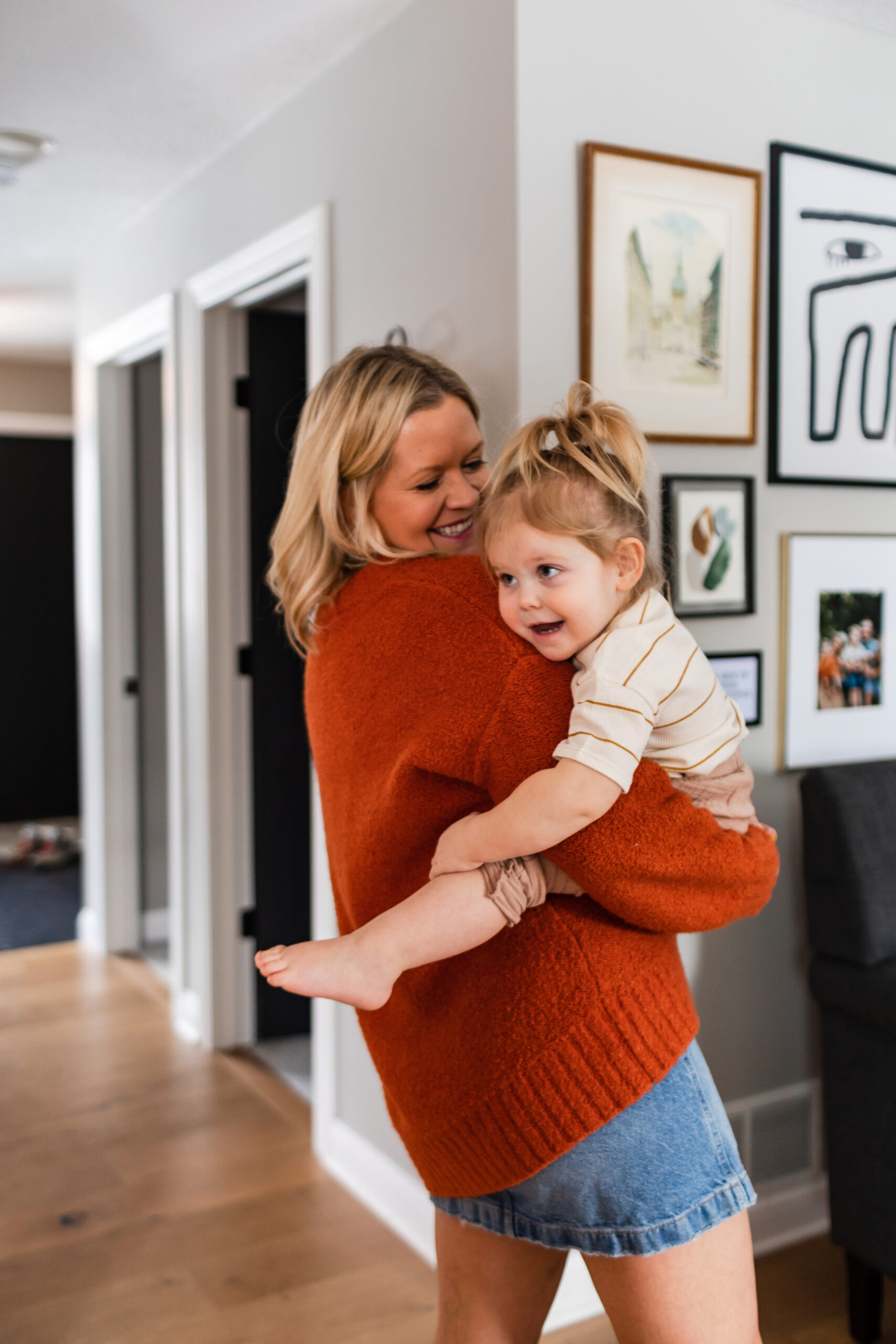
Excellent writing! We can take away a lot of important information from this article. Keep sharing great posts.
I accidentally crushed a section of my popcorn ceiling, and it now looks just like… knockdown texture. I’m wondering if anyone has attempted to use some kind of a roller to just flatten popcorn into knockdown. I found a hard rubber roller on amazon that would work fine. But, maybe there’s a reason people don’t do this and I’d like to ask someone with experience or expertise.
Thank you!
Hey Sandra!! Awesome! We typically use Ultra White Behr ceiling paint. It’s actually labeled ceiling paint and I’m sure any other brand will be great, but it should be labeled ceiling paint. Let us know if you have more questions. Good luck!!
The popcorn is gone, the knock down is on so what kind of paint do I need? I bought flat white ceiling paint with primer but I was told that wouldn’t work I need to paint it with kills (not spell right I’m sure) could you tell me what paint will cover the knock down?
Thank you